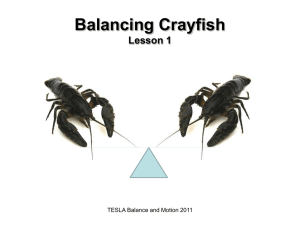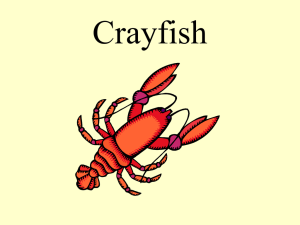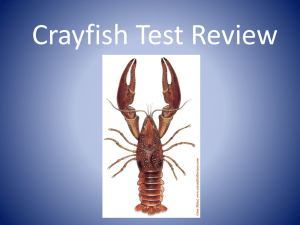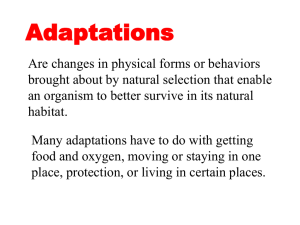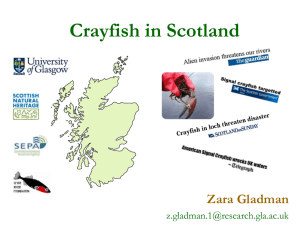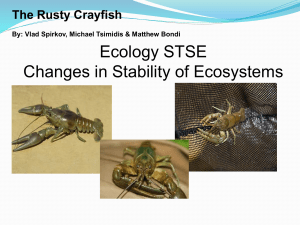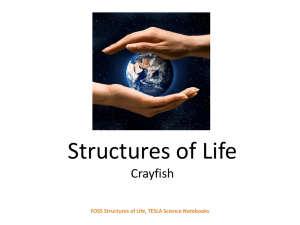Meet the Crayfish
advertisement
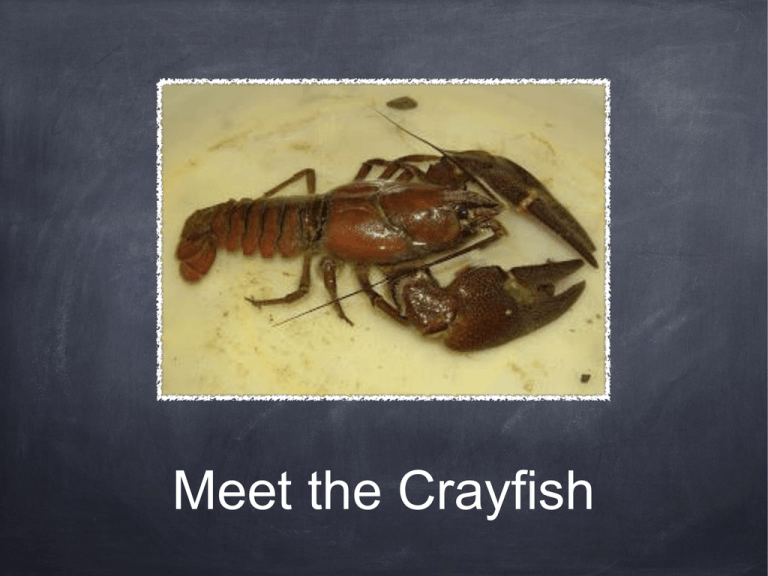
Meet the Crayfish Handling Crayfish Approach the crayfish from behind Grab the crayfish behind the pincers It may try to reach back but it will not be able to touch you if you grab it in the right place If you are scared of touching them, you may use a spoon to help you get them. Do not let the crayfish fall off your desk. Introduce the Crayfish Organism It is ok for the crayfish to be out of the water 1 to 2 minutes. Explore the crayfish for a few minutes. Observing Crayfish Do you notice any interesting parts on the crayfish? The different parts are called structures. Structures - the observable parts of an organism. Fill out the crayfish structures sheet by observing your crayfish. Questions In what ways are the pincers and walking legs different? In what ways are they alike? Where else have you seen bristles? Where are the joints in our legs? How does that compare to a crayfish? Differences Do you notice any differences among the crayfish you have? Crayfish Body Parts Crustaceans - a class of mostly aquatic animals that have hard flexible shells, jointed legs, and two pairs of antennae. Antennae - the feelers on a crayfish Bristles - the short hairs on a crayfish that help them sense things in their environment. Carapace - the main body shell of Crustaceans. Crayfish Body Parts Swimmerets - small leg-like structures under a crayfish tail. Pincers - big jointed leg-like structures in front of the crayfish. Notes What structures have you observed on the crayfish? Legs, eyes, antennae, a carapace, swimmerets, Identify Crayfish parts p. 25 Crayfish Needs What do we need to know about crayfish in order to keep them here in our classroom? Feedings Water Air Space Togetherness Habitat Habitat - the place where an animal lives. In their natural habitat, crayfish find their own food and shelter. But in the classroom they must be fed and provided with a suitable habitat. Elodea - a kind of aquatic plant that crayfish eat. Classroom Crayfish Habitat The water must be cool. There can be no direct sunlight. We must change the water every so often to keep it clean. There will be aquatic plants in the bus tubs continuously for food. The crayfish also eat cat food, which must be fed to them in a separate container. Notes What do crayfish need for a healthy habitat? Crayfish need clean, cool water; food from plants, animals, and shelter. Complete science journal page 33 Crayfish Observations Today we will observe crayfish to find out what they do. What do crayfish do when something happens to them? What do they do when you bring a hand close, place them outside of the water, place another crayfish nearby? Procedure Get a small basin with 3-4cm of water. Select the crayfish you will observe. Observe the crayfish for 5 minutes. Sharing What did you observe the crayfish doing? These are called behaviors. Behaviors are things that animals do. Fill out the crayfish behavior sheet with your group. Notes What do crayfish do when something happens to them? Behaviors such as raising their pincers, flipping their tail, or walking forward. Crayfish Houses What do you think the crayfish are using for their houses for? Do all crayfish hide in the houses? Does each crayfish have its own house that it always goes to? Do two crayfish hide in the same house? How can we find out for sure? Plan Secure the crayfish houses in specific locations in the habitat trays. Observe the crayfish once a day to find their location. Record the location on the crayfish habitat sheet. Territory Territory - when an animal moves into a place in its habitat and defends it against others. Patterns Did any of the crayfish establish a territory in the habitat? How do you know? What other animals behave like crayfish in some ways? Notes Does each crayfish have its own house that it always goes into? Some animals establish territories that they defend.

